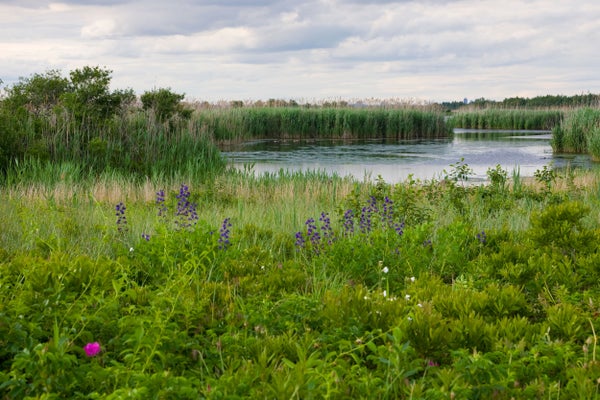For every New Yorker who fled the city during the pandemic, many more never left the five boroughs. For months, like people all over the country, we hunkered down in our apartments, and our worlds got a lot smaller.
During the first wave of the pandemic, the city’s parks became my refuge. When it felt like the world was closing in on me, what kept me sane was putting on a pair of boots to hike trails through the woods in Pelham Bay or to walk around the marshes of Jamaica Bay—wild places right in my own backyard.
All parks nurture us, but our urban natural areas offer us the greatest sense of escape. They’re true engines of parks equity, giving people who don’t have a car the ability to immerse themselves in nature by walking down the block, hopping on a bike or taking public transit.
On supporting science journalism
If you're enjoying this article, consider supporting our award-winning journalism by subscribing. By purchasing a subscription you are helping to ensure the future of impactful stories about the discoveries and ideas shaping our world today.
It’s time we invest in these special places, because our natural areas have never been more important. Back in 2014, our colleagues at the Forest Service conducted an assessment that found half of New Yorkers experienced nature predominantly through the city’s parks.
At the Natural Areas Conservancy, we survey park-goers to our natural areas, too, and last summer our interviews with park visitors found nearly two thirds of them increased their use of natural areas in the city parks system as the pandemic bore down on us.
Here in New York, our swaths of natural areas add up to more than a dozen Central Parks in size.
But despite decades of work and dedication by NYC Parks staff, our natural areas are underfunded and understaffed. It’s not for lack of use or popular interest; every year, more people visit Jamaica Bay—the sprawling wetlands near JFK Airport—than visit Yellowstone National Park.
The same holds true across the country. All across America, natural areas like forests and wetlands comprise nearly 70 percent of our urban parks. And in a recent peer-reviewed study, the number-one challenge cited by urban forestry managers across the nation is lack of funding and resources. These sprawling spaces receive just a fraction small of the staff and dollars compared to more conventional parks like lawns, ball fields and playgrounds.
Urban natural areas have never been the top priority, not across the country, not here in New York.
Our past mayors Rudolph Giuliani and Michael Bloomberg put their dollars and energy into restoring our flagship parks that visitors frequent—like Bryant Park, Central Park and Prospect Park. Our current mayor, Bill de Blasio, made his focus the small neighborhood playgrounds that define day-to-day life for so many families.
But next year, New York City will have a new mayor, and he or she will have a tremendous opportunity to leave their mark on our natural areas and make us a national model for saving the wild places that offer us the greatest escape, face the greatest threats and have the greatest benefits as we prepare for climate change.
They will need to act with urgency. Through sea level rise, infill, encroachment and lack of active management, the last wild corners of New York City are disappearing. We lose six acres of wetlands every year in New York City—an area the size of Madison Square Park, in Manhattan
The lesson from the resurgence of our other urban parks here in New York is that with investment and attention, our natural areas can become thriving parks, too.
The roadmaps the Natural Areas Conservancy has developed for our local forests and, in recent weeks, for our wetlands call for major new budget investment—hundreds of millions of dollars over the coming decade. That may sound daunting, but it’s the same scale that the current administration put behind its own signature parks initiatives.
Those resources will fund projects that elevate submerged and eroded wetlands, give wetlands a buffer to “migrate” inland as sea levels rise, and remove debris that chokes off habitats. With new support, we can hire the staff needed to bring thousands of acres under active management, protecting wildlife, cleaning up litter and maintaining nature trails that for people to enjoy.
It’s achievable here in the nation’s largest, densest city. And it’s a viable template for cities across the country to transform our natural areas into healthy, vibrant and popular parks destinations.
Yes, it’s counterintuitive to think of any part of a big city being truly wild.
But the exaltation I get walking under old-growth trees in Forest Park in Queens or kayaking through Brooklyn’s Marine Park as the sun rises feels just as cathartic as any experience I’ve had in a national park.
I want that for people in our city and in every city, of every means. And it’s within our grasp if we remember: our natural areas are our parks, too.
This is an opinion and analysis article.
